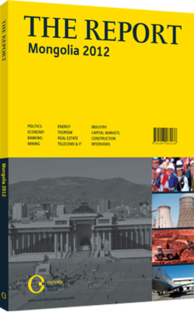Brand recognition: Introducing labels and expanding chains
The retail sector in Mongolia has made great strides in recent years, in step with its fast-paced economic growth. Although largely confined to the capital city of Ulaanbaatar, this transformation has brought luxury retail, chain stores, hypermarkets and other retail strategies that have elsewhere presented challenges to the old model of small markets and independent sellers. As of late 2011 there were five main big-box retailers in the country, offering everything from groceries to handicrafts. These retailers are also operating secondary locations in the capital, giving Mongolians a first taste of chain stores. There were also about 60 supermarkets and hypermarkets, and 2500 local operations.
THE CHAIN GANG: Chain retailers like Nomin, Orgil, Sansar, Bosa, Sky and others are bringing outside innovations to the Mongolian retail sector. Mini Delguur, for example, operates a distribution centre from which goods are then transported to its retail locations. Nomin’s purchasing department maintains relationships with 1000 active vendors, N. Uyanga, the head of retail division at Nomin, said. Though slightly less so in the grocery aisles, imported goods comprise the bulk of what is on offer. The total has been as much as 95% in the past, but now is around 90% for Nomin, as more local produce has become available in recent years. Other common imported foodstuffs include milk and other dairy products, chicken and pork. In other areas of the big department stores, however, such as the electronics and clothing sections, all items are imported.
One of the main problems for retailers is a fragmented roster of importers – there are many small players and few large, diversified ones. In many cases, what they have to sell are one-time purchases and cannot offer a range of products, which would help retailers to court regular customers through the availability of branded items at any given time. Competition from black-market products is an issue in some industries, perhaps in part due to taxes that are perceived to be relatively high. “The government must find the right balance in the tax policy and make sure it is equal to regional neighbours,” D. Erdene, the CEO of Voltam, a major Mongolian cigarette producer, told OBG. “If taxes are too high, it will increase flow of illegal cigarettes.” Some segments are also restricted by regulations prohibiting advertising. “In terms of advertising of tobacco products, Mongolia has a total and complete ban on all forms of media, both TV and print,” Erdene told OBG.
SPECIALITY: As of now the market is too small to support many large-scale speciality stores. There are a few large electronics-only big-box stores, which typically also carry household appliances. As the market matures, however, and more Mongolians have disposable income and greater exposure to a new method of shopping, it is expected that more speciality retailers will emerge.
On a smaller scale, however, speciality retailers are on the rise. Ulaanbaatar’s Central Tower is home to an upscale mall that opened in 2009, across the street from Sukhbaatar Square, the city’s focal point. Tenants include Louis Vuitton, Burberry, Zegna, Emporio Armani, Hugo Boss and Apple (see analysis).
OBSTACLES: While high-end brands need only a small group of big spenders to thrive in a retail market such as Mongolia’s, the rest of the retail sector would benefit from government assistance. Two of the biggest problems are the import process and traffic. Imported goods must go through a certification process, and that can take anywhere from two weeks to two months. Corruption and inefficiencies hamper the process, and often imported goods must sit in a warehouse in Ulaanbaatar while an importer works to finish the process.
Traffic hurts retailers because Ulaanbaatar hosts about 40% of the population, but has just one main artery – Peace Avenue – which runs east-west through the city. With no other option to ease congestion and a chaotic driving culture further slowing the process, Peace Avenue is clogged with cars, trucks and buses much of the time. So for many city dwellers in search of just a few items, Uyanga told OBG, the choice to walk from home to a nearby convenience store or kiosk is preferable to getting into a car and sitting in traffic.
You have reached the limit of premium articles you can view for free.
Choose from the options below to purchase print or digital editions of our Reports. You can also purchase a website subscription giving you unlimited access to all of our Reports online for 12 months.
If you have already purchased this Report or have a website subscription, please login to continue.

